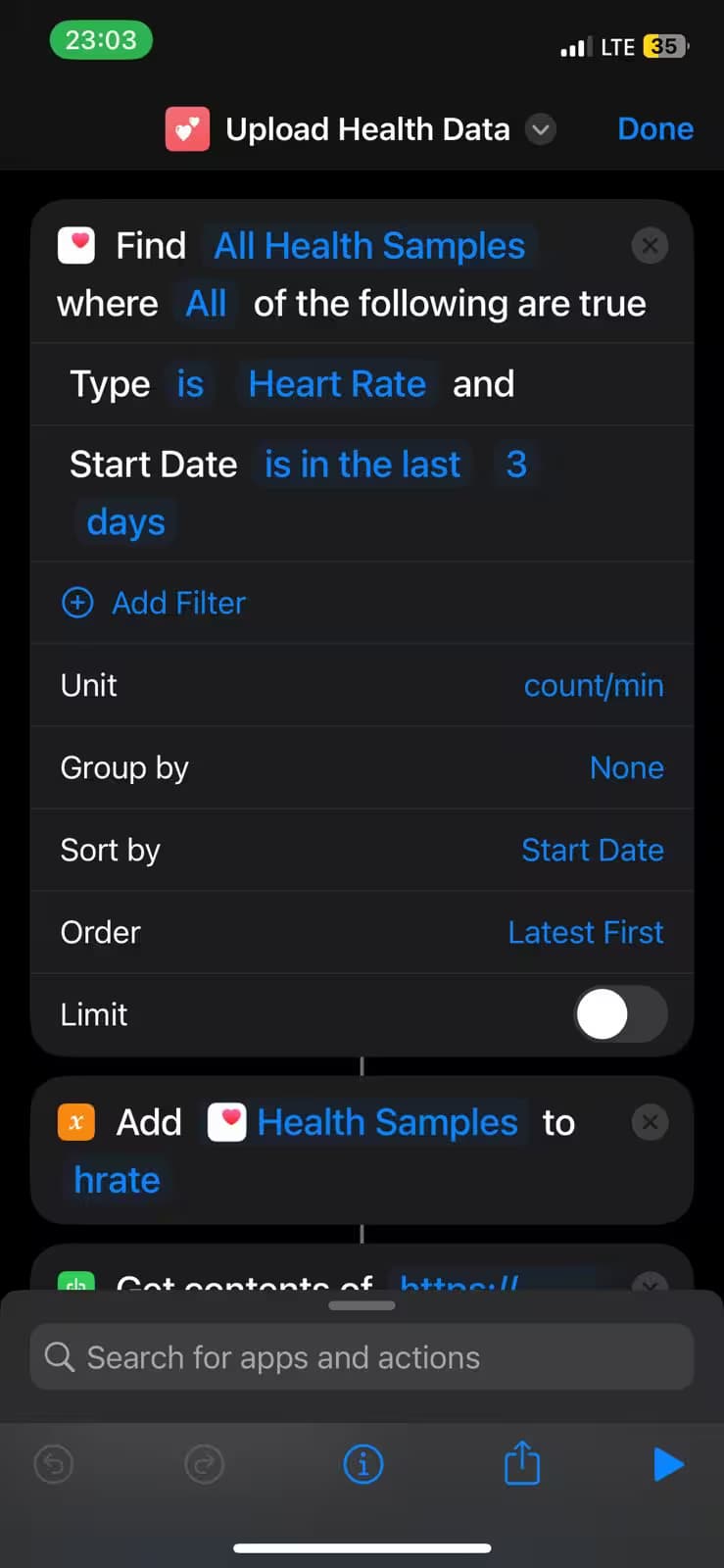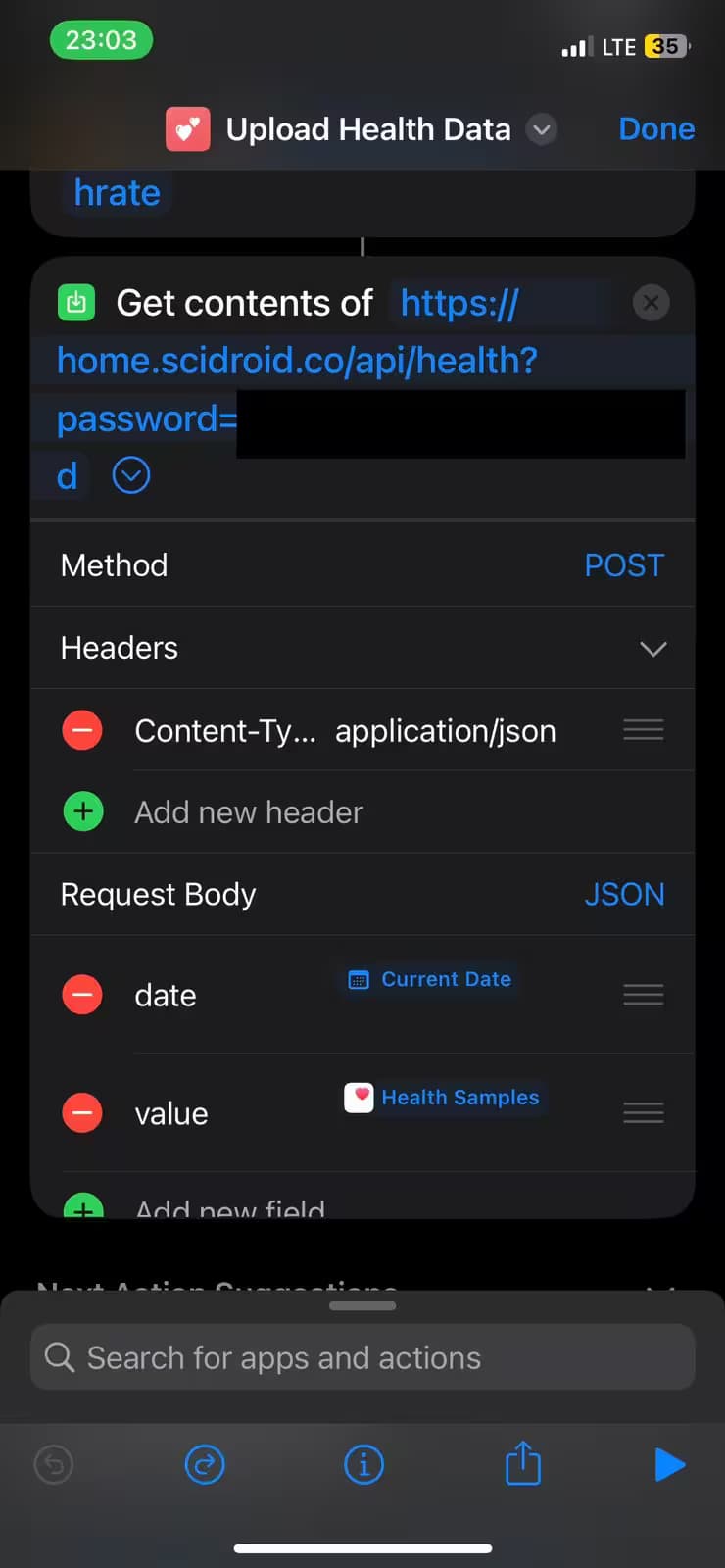While Apple Health data is typically stored solely on the device and lacks an official API for data exposure, there are ways around this. In this guide, we'll explore a creative solution to this challenge by crafting a custom API. We'll use an iPhone shortcut to automate the process of fetching health data and sending it to an endpoint on your website.
Creating the shortcut
Let's begin creating the shortcut and retrieving health samples of a specific type. For this demonstration, we'll fetch the heart rate.
The 'Find Health Sample' action offers different options based on the metric you're seeking. In this case let's select 'Hearth rate' with the condition 'is in the last 3 days', and create a variable to store the result. Just like in this screenshot:

Next, the 'Get Contents Of' action is triggered, which sends a request to our endpoint and the body of our POST request. The body of the request is a JSON object containing the current date, along with the 'heart' field. This field references the 'hrate' variable declared earlier. For the URL you can add a search param with the password so you can prevent abuse of your database.

Creating the API Endpoint
Once your shortcut is ready, the next step involves setting up your API endpoint. The code snippet below outlines the process for Next.js with Vercel KV but you are free to use the service you most like:
Make sure to create a .env file and add the PASSWORD variable and the keys for the key-value service.
import { kv } from "@vercel/kv";
const { PASSWORD } = process.env;
export async function POST(request: Request) {
const password = new URL(request.url).searchParams.get("password");
if (password != PASSWORD) {
return Response.json(
{
error: "incorrect password"
},
{ status: 401 }
);
}
const res = await request.json();
await kv.set("health", res.value);
return Response.json(data);
}Display the data using RSC
If you are using the Next.js app router or any other implementation of RSC you can directly fetch the Vercel KV service in the component.
import { kv } from "@vercel/kv";
export async function HealthData() {
const bpm = await kv.get("health");
return <p>{bpm} BPM</p>;
}